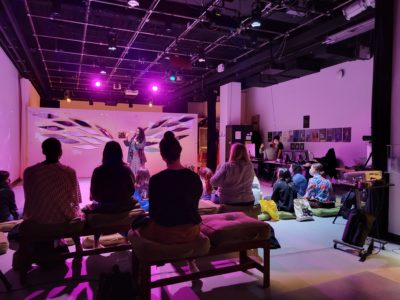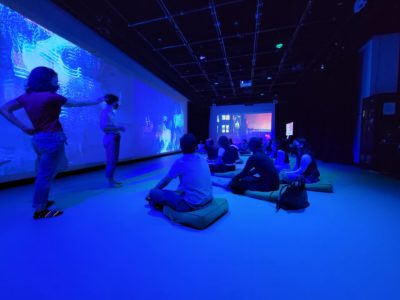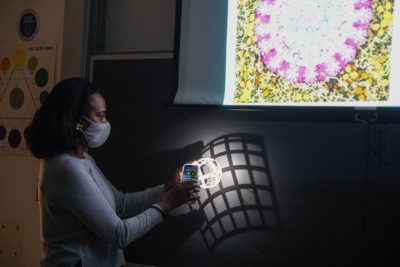FIT, like the creative industries it serves, thrives on collaboration. One professor took that to an entirely new level with a course that brought together FIT and Barnard College students to make art using code.

Arts and Computing in NYC, taught in the fall of 2021, was the brainchild of assistant professor of Science and Math Maria Hwang and Barnard professor Mark Santolucito. They expressly paired creative and quantitative students from both institutions, then challenged them to demonstrate their leaning with interactive, computer-aided art installations.
“We wanted something they can build from scratch, something that they take responsibility for—basically do a performance for an audience out in the wild,” Hwang says.
The lectures, which alternated between the two schools, introduced students to computing concepts, with help from guest lecturers from the FIT community. The topics covered ranged from predictive analytics to digital music to NFTs. The course culminated with a two-day interactive exhibition in Barnard’s Movement Lab, where visitors could experience the students’ creations.

One project, intended to reacquaint a person with their body, put the blindfolded visitor into a sweatshirt filled with sensors and invited them to move around, with the sweatshirt’s wiring translating the movements into sounds played back to the wearer. Another project, an abstract representation of the universe, consisted of yarn and lights stretched over an egg-shaped frame, with lighting that responded to the visitor’s distance from the exhibit.
The class encountered logistical challenges—such as the challenge of transporting a large sculpture over 90 Manhattan blocks—but the process of learning pushed the students into unexpected collaborations. That, Hwang says, is a valuable skill for any creative worker.

“You are not going to be working in silos,” she tells her students. “You are going to be working with the data scientists, with a product manager or project manager, with somebody more technical, somebody who doesn’t know anything about technology, and you need to be able to navigate that world.”
In fact, it’s why she’s a proponent of teaching computer science at an arts school.
“In computer science, we are always interdisciplinary,” Hwang says. “That’s where we’re going in the future. So why not have the lingo, and the skills, to communicate your expertise?”
